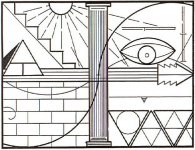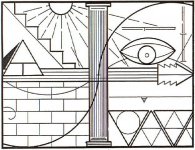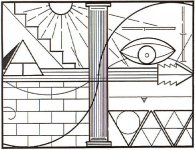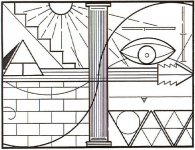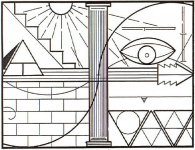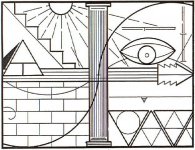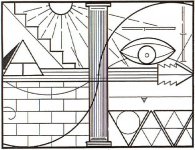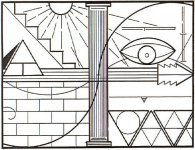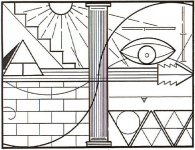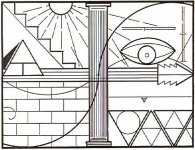Randy Bradford said I could post this info on his Treasure Mountain thread, but I decided to start a new one. I'm not going to go into a lot of detail unless somebody asks and then I'll be happy to.
Here's the LUE map that I'll use.
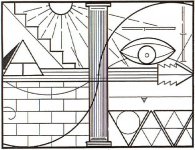
Here's an excerpt that I found about Lafayette C. Baker, a Union spy during the Civil War, and how he processed information.
Baker had a system devised which eliminated the need for written words and maps. He memorized them. He could but others couldn't. He would divide a map into four segments of equal size and then determine the important segments. He would then concentrate on the important segments. He would draw mental lines diagonally cross the segments and then refer everything to these lines and their point of intersection, referring to everything in kilometers and degrees of [a] compass. He would then remember the two sets of numbers. He could retain up to fifty sets of numbers and transpose them back onto a map of different scale some two to five days later with no error. Once he met someone he could always call them by name on the next meeting. He was, without doubt, a genius.
I thought this was interesting because the LUE map is divided into four parts.
Here's the LUE map that I'll use.

Here's an excerpt that I found about Lafayette C. Baker, a Union spy during the Civil War, and how he processed information.
Baker had a system devised which eliminated the need for written words and maps. He memorized them. He could but others couldn't. He would divide a map into four segments of equal size and then determine the important segments. He would then concentrate on the important segments. He would draw mental lines diagonally cross the segments and then refer everything to these lines and their point of intersection, referring to everything in kilometers and degrees of [a] compass. He would then remember the two sets of numbers. He could retain up to fifty sets of numbers and transpose them back onto a map of different scale some two to five days later with no error. Once he met someone he could always call them by name on the next meeting. He was, without doubt, a genius.
I thought this was interesting because the LUE map is divided into four parts.


